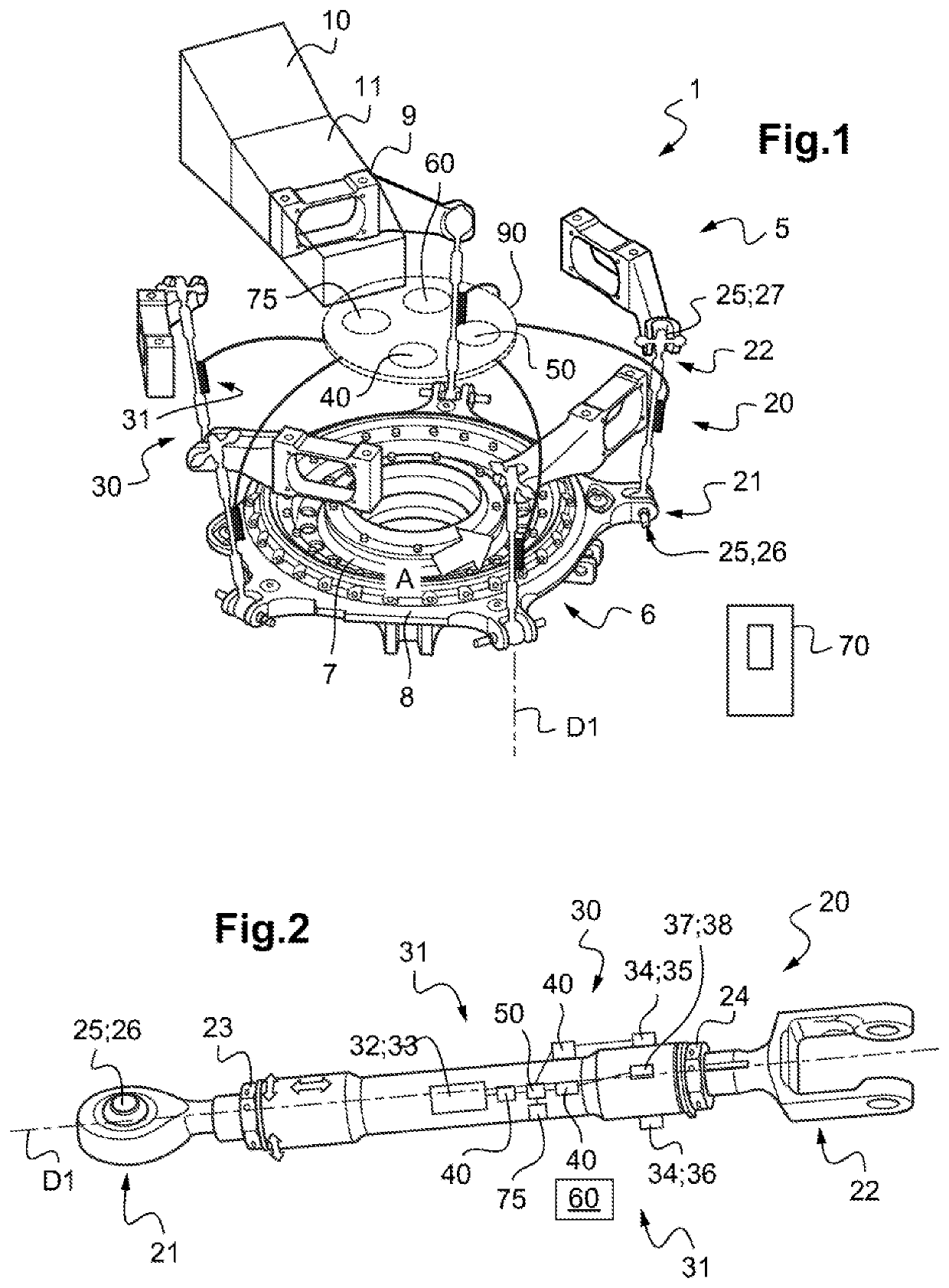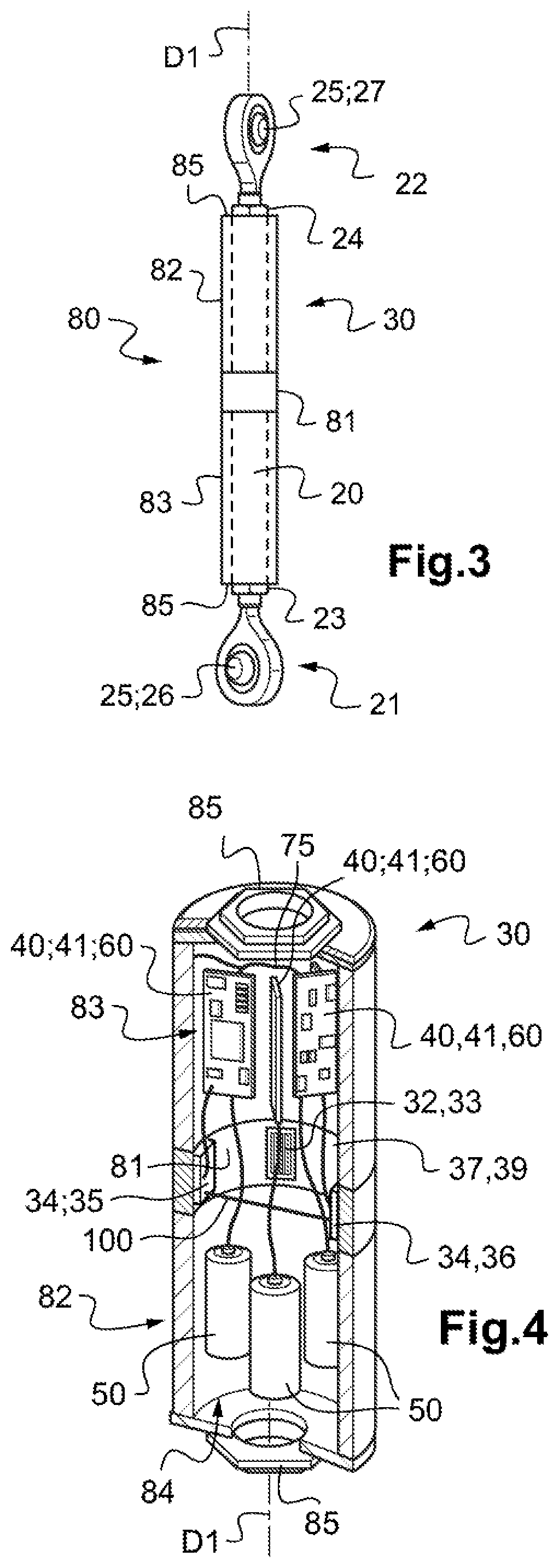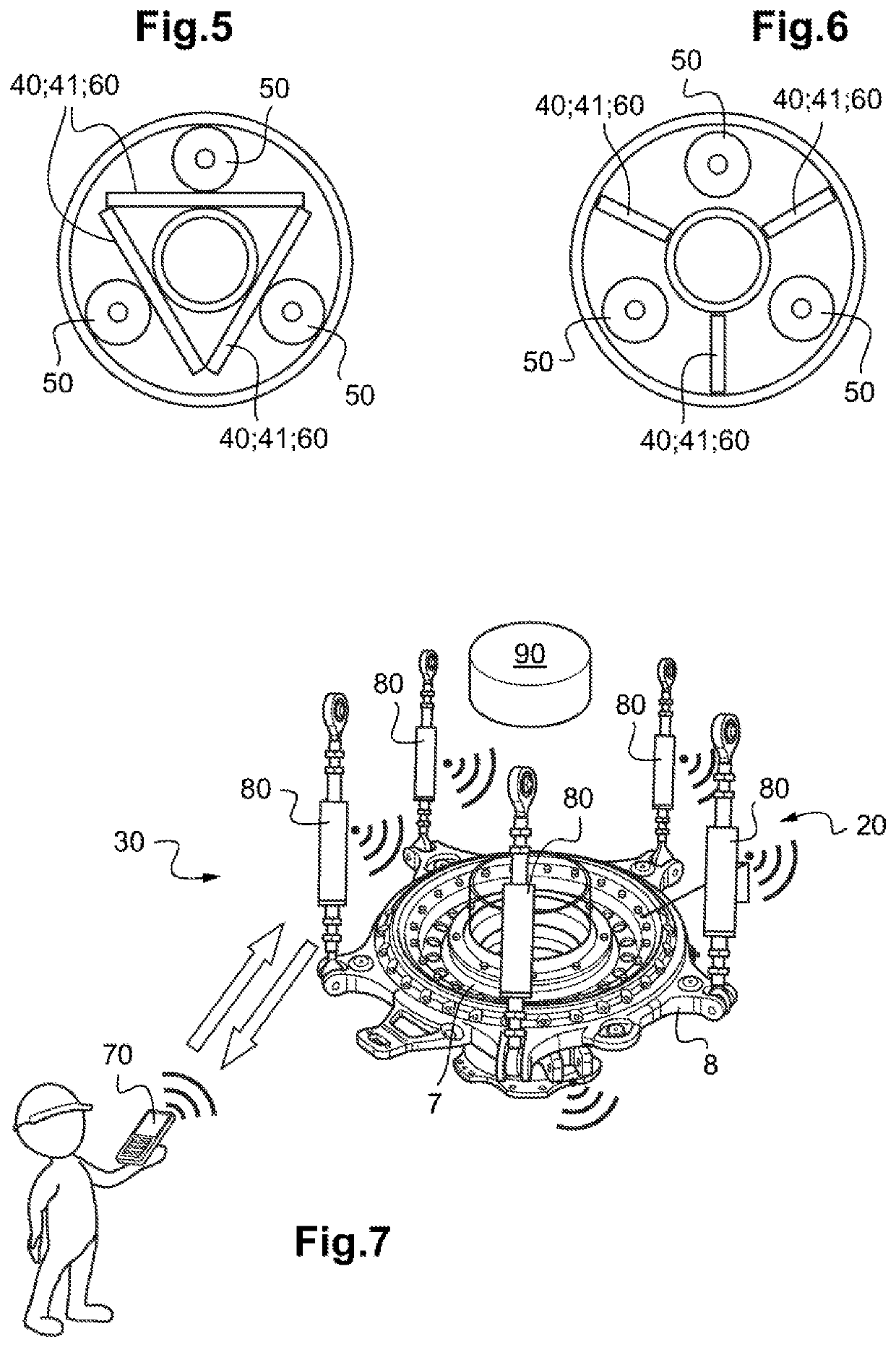System and a method for detecting wear of a ball-joint connection device of a rod, a rotor assembly, and an aircraft
- Summary
- Abstract
- Description
- Claims
- Application Information
AI Technical Summary
Benefits of technology
Problems solved by technology
Method used
Image
Examples
Embodiment Construction
[0098]FIG. 1 shows an embodiment of a detection system 30 of the invention seeking to detect wear of a ball-joint connection device, referred to more simply as a “ball joint”.
[0099]By way of example, such a detection system 30 may be arranged on a rotor assembly 5, and in particular on a rotor assembly 5 of an aircraft 1, in order to detect wear of a ball-joint connection device 25 of a pitch rod 20.
[0100]Specifically, such a rotor assembly 5 may include a plurality of blades 10. Each blade 10 is carried by a rotor head not shown, possibly via a cuff 11 and / or via hinge and retaining devices. Certain blades may include cuffs that are integrated therein.
[0101]The rotor assembly 5 also includes multiple pitch rods, and in FIG. 1 it includes one pitch rod 20 for each blade 10 in order to connect each blade 10 to flight controls. Each pitch rod 20 extends longitudinally along its extension direction D1 from a first zone 21 to a second zone 22, the first zone 21 and / or the second zone 22...
PUM
| Property | Measurement | Unit |
|---|---|---|
| Time | aaaaa | aaaaa |
| Frequency | aaaaa | aaaaa |
| Energy | aaaaa | aaaaa |
Abstract
Description
Claims
Application Information
 Login to View More
Login to View More - R&D
- Intellectual Property
- Life Sciences
- Materials
- Tech Scout
- Unparalleled Data Quality
- Higher Quality Content
- 60% Fewer Hallucinations
Browse by: Latest US Patents, China's latest patents, Technical Efficacy Thesaurus, Application Domain, Technology Topic, Popular Technical Reports.
© 2025 PatSnap. All rights reserved.Legal|Privacy policy|Modern Slavery Act Transparency Statement|Sitemap|About US| Contact US: help@patsnap.com



